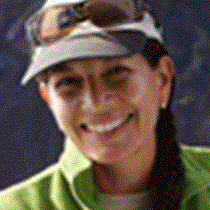Isabela Island
Today our day was dedicated to Isabela Island, the largest island in the Galápagos group, over half the total surface area of the archipelago, created by the fusion of six enormous shield volcanoes, which give rise to the characteristic “seahorse” shape of the island. The flora and fauna of the island are unique, and were under serious threat, especially by the presence of feral goats and donkeys. Through the Isabela Project, one of the programs supported by Lindblad Expeditions guest donations, goats and donkeys were successfully removed from the island, and now the native inhabitants that once faced extinction are well on the road to recovery.
Our morning started at Urbina Bay, located at the footsteps of Alcedo Volcano on the western coast of Isabela. In 1954, 1.5 square kilometers of the marine reef off the coast of Urbina was uplifted almost instantaneously, by as much as 15 feet! Sea worms, coral heads and other marine creatures were left high and dry after the uplift.
On the way to the landing beach, we were happily surprised by a group of bottlenose dolphins that were jumping and feeding near our zodiacs. We also spotted some eagle rays and sea turtles on the water, as well as five young Galápagos hawks that came to greet us on the beach. The walk along the uplifted coast of Urbina was fantastic—the landscape, the lava features, the marine creatures exposed and the presence of land iguanas and a couple of giant tortoises completed a perfect morning.
Then, once we were back on board, Jonathan, one of our naturalists, gave us a very educational talk about fish and we all learned interesting facts about these fascinating but not always well-known marine creatures.
During a delightful Ecuadorian lunch, the National Geographic Endeavour repositioned a few miles to visit historic Tagus Cove, where wayfarers over the centuries have sought a sheltered harbor and access to the island; some interesting historic graffiti can still be found near the landing.
After a good deep-water snorkel along the coast of Tagus Cove, where we saw sea turtles, penguins and some flightless cormorants, along with many different species of fish, some guests went kayaking or for a zodiac ride while others went for a hike to the rim of a tuff cone overlooking “Darwin's Lake” and beyond. The landscape was fantastic, and to end a perfect day, we were able to walk back under a beautiful full moon just before sunset.
It was a day full of adventure, activities and unique experiences that will last in our memories forever.




